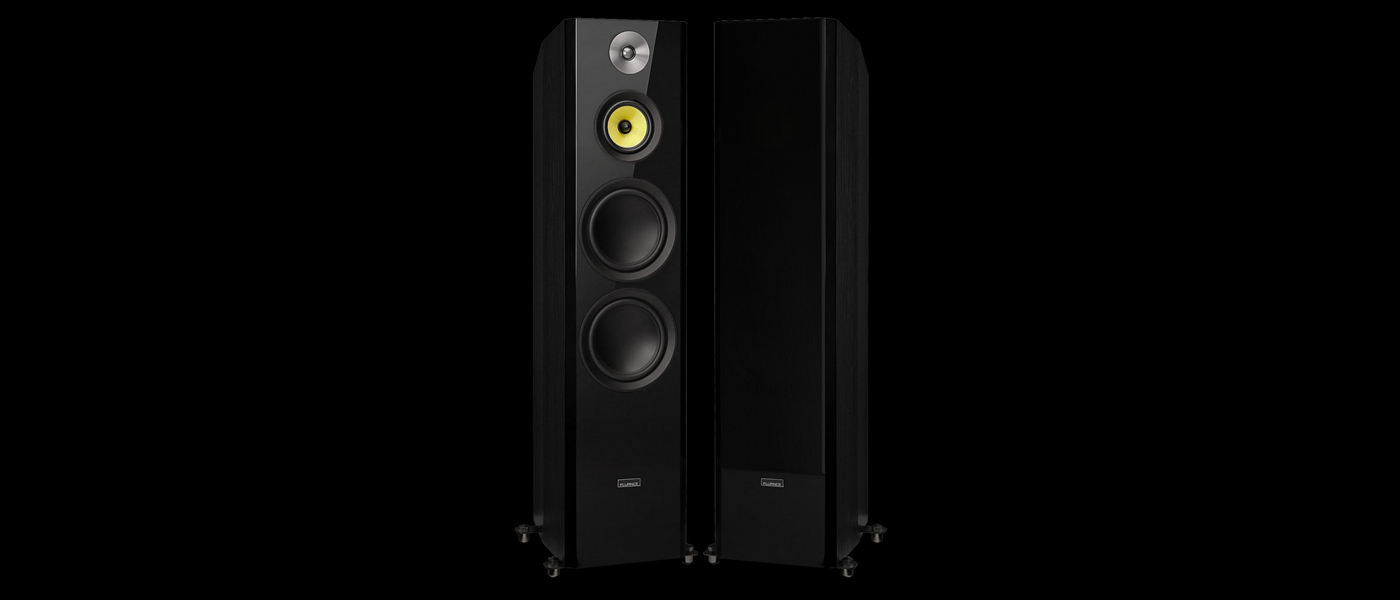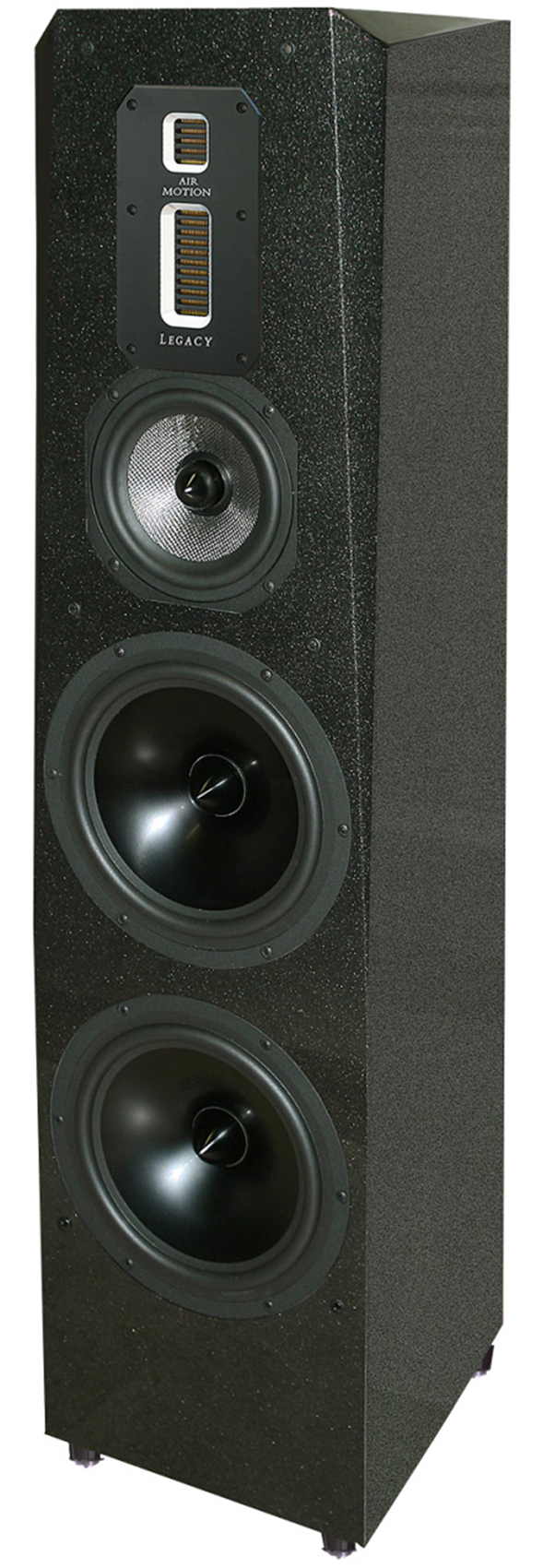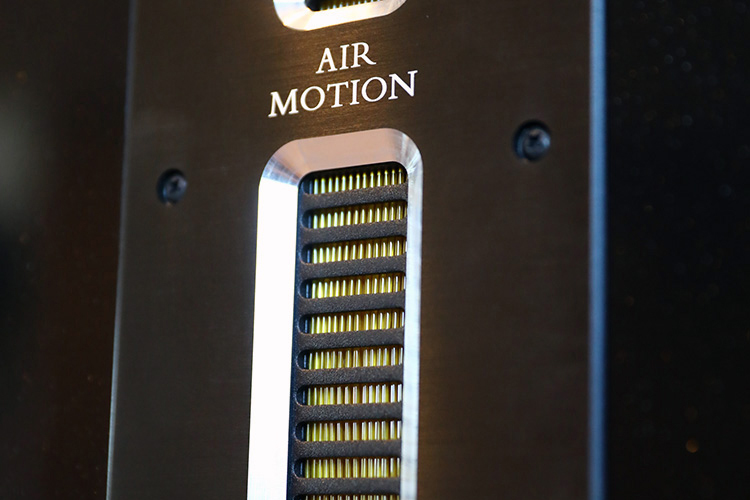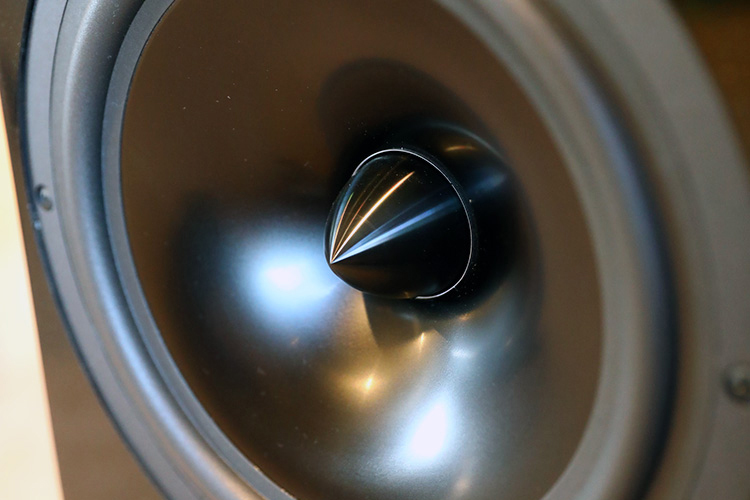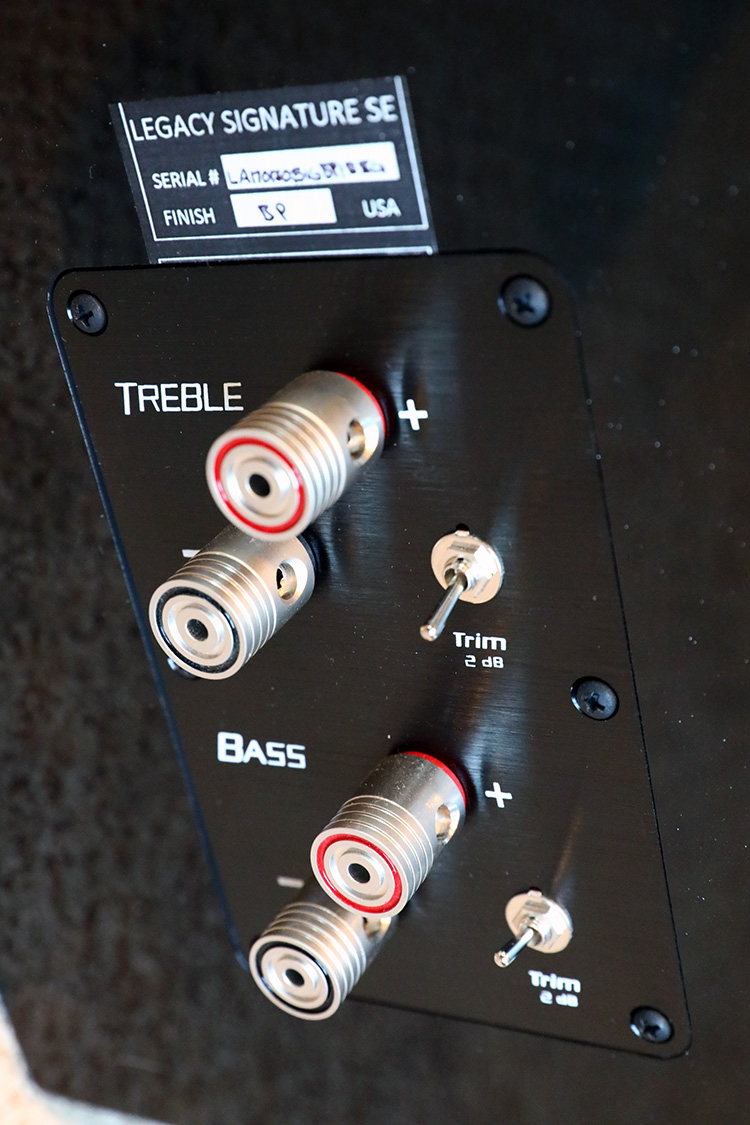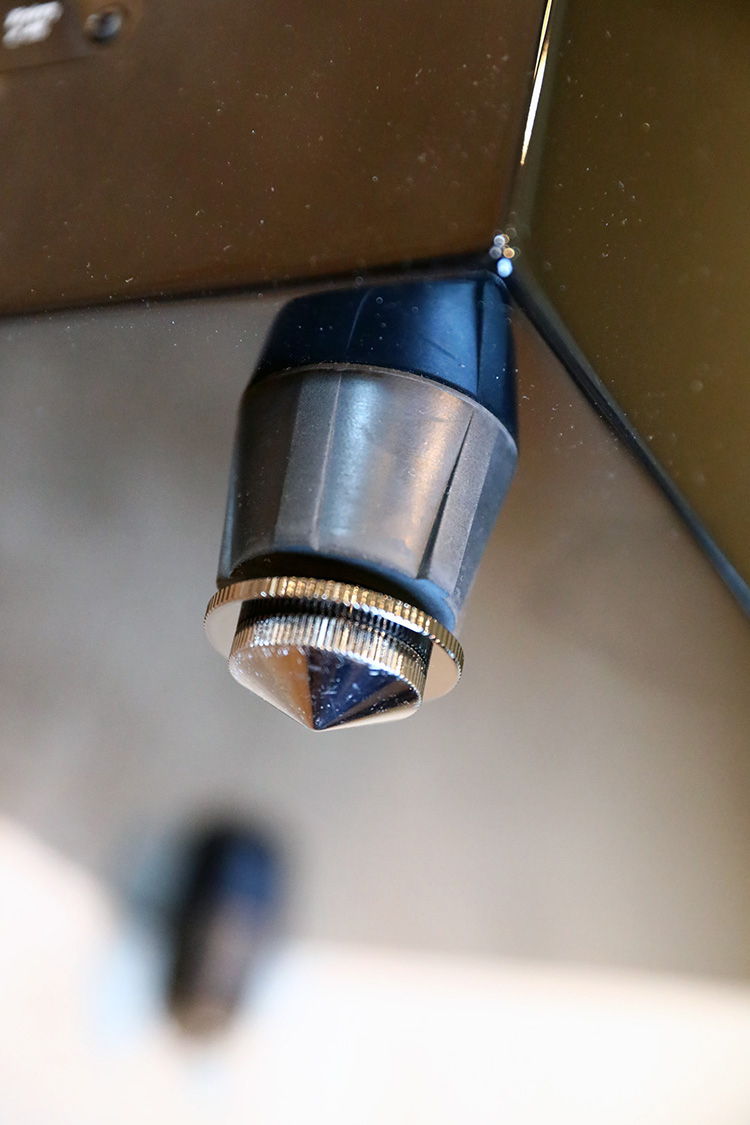The Signature SE retains the incredible dynamics, finely nuanced midrange, detailed treble, and crisp bass inherent to Legacy’s “house sound”, while still remaining easy to integrate into most rooms.

Legacy Audio Signature SE Tower Speakers
- Unique modern design
- Lots of finish options
- Tremendous output capability
- Highly efficient
- Sealed woofer design allows for placement flexibility
- EQ toggle switches for bass and treble allow for easy fine tuning of the sound
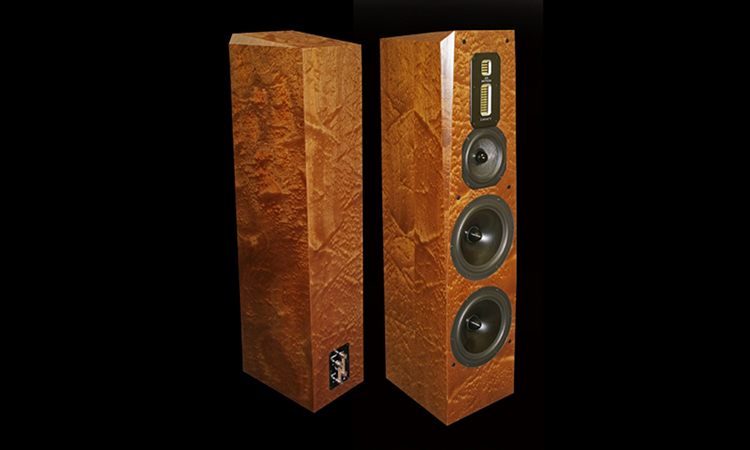
About 10 years ago, I heard my first set of Legacy Audio speakers, the original Focus towers, at a local dealer. They impressed me immensely; so much so that I seriously considered their replacement, the Focus SE, when upgrading my entire media room sound system a few years ago. While I loved pretty much every aspect of the Focus SEs, there was just one drawback for me – they were simply too big for the space.
Design:
4-way sealed tower loudspeaker
Drivers:
1 x 1” AMT neo-ribbon tweeter, 1 x 4” AMT neo-ribbon midrange, 1 x 7” Silver Graphite midwoofer, 2 x 10” aluminum woofers
Crossover:
180Hz, 2.8kHz, 8kHz
Frequency Response (Mfr):
22Hz-30kHz
Sensitivity:
92dB SPL
Nominal Impedance:
4 ohms
Recommended Amplifier Power:
10W – 300W, without clipping
Dimensions (H x W x D):
48 x 12 x 13.75”
Weight:
106lbs each
Finishes:
Numerous
Warranty:
7 years parts and labor
MSRP:
$6,995/$7,785/$8,250 per pair depending upon finish
Company:
SECRETS Tags:
Legacy Audio Signature SE Tower Speaker, Tower Speaker, Legacy Audio, Full-range Speaker, Speaker Reviews 2017
Seeing the potential in a slightly smaller version of the Focus, Legacy Audio created the Signature SE. Utilizing very similar materials and drivers in a smaller cabinet, the Signature SE could be the “just right” size for a tower speaker – big enough to offer potent bass and output levels, yet small enough to fit into a greater percentage of listening environments. Do the Legacy Audio Signature SEs hit that sweet spot? Let’s find out.
- Legacy Audio Wavelet Preamp/Processor
- Legacy Audio Introduces Foundation Subwoofer
- Legacy Aeris Floor-standing Speaker
Let’s get one thing out of the way right off the bat, the first thing you notice about the Legacy Audio Signature SEs is their rather imposing size. Even though they are quite a bit smaller than the Focus SE/XDs, they are still big: 48” tall by 12” wide by 13.75” deep. However, given their roughly one square foot footprint, they don’t take up too much floorspace. The front baffles are elegantly beveled along the vertical side and top edges, which adds a very cool modern vibe to their aesthetic. The Signature SEs should fit well in any medium to large-size room without issue. Cabinet construction is 1”-thick MDF with interlocking joints for increased strength. The entire cabinet is coated in your choice of veneers. My review samples came in the Black Pearl finish, a very neat looking black metallic paint that is part of the $7,785 Premium Finish category. The high-gloss was perfect, the result of multiple coats of paint and hand-buffing. There are also four veneers available in the Standard finish range at a price of $6,995 per pair and some more unique finishes in the $8,250 Exotic category. The black fabric grilles attach with the normal mounting posts, which means that you will see some small holes if you run the speakers naked. I’d love to see a magnetic grille option on future models to preserve the otherwise clean look of the front baffles.
The driver array is very impressive on the 4-way Signature SE, consisting of a 1” neo-ribbon Air Motion Tweeter (AMT), a 4” neo-ribbon AMT midrange, a 7” Silver Graphite midwoofer, and two 10” aluminum woofers. The phase plugs on the two woofers were particularly impressive as they felt as if they were made from a solid chunk of aluminum. The ex-DJ in me smiled, thinking about just how hard these two woofers could “kick.” The Signature SE is a completely sealed design with the 7” midrange housed in its own separate chamber to reduce internal reflections. The 10” woofers are paired to reduce distortion and designed to couple to the floor boundary for increased bass extension.
Moving around back, there are dual sets of very solid binding posts with metal jumper bars connecting the treble and bass inputs. You simply loosen the posts and remove them if you want to bi-amp or bi-wire. Next to the binding posts are two equalizer switches labeled “Trim”. With both switches in their up positions, the Signature SEs are configured for an anechoic flat response. Flipping the upper switch to the down position will reduce the treble by 2dB around the 10kHz mark. This can help tame any perceived brightness in a more reflective room. The lower switch triggers a 2dB decrease in output from 65-90Hz. This can tame excessive room bloat and has the added benefit of raising the impedance of the speaker so that it will sound better with low-quality amplification (i.e. inexpensive A/V receivers). We’ll explore how well these switches work later. Finishing up the cabinet details are thick rubber feet threaded into the cabinet. If you are installing the speakers over carpet, Legacy also includes floor spikes that can be threaded into the rubber feet.
Secrets Sponsor
Overall construction quality of the Signature SEs is first-rate. They are manufactured entirely in the US which is commendable given the price point. Legacy Audio also makes a full line of matching subwoofers, center channels, surround speakers, and in-wall/on-wall models if you wish to put together a complete multi-channel or home theater system.
Once I managed to lug the approximately 140 pounds apiece (packaged) Legacy Audio Signature SE Tower Speakers up the rather tall flight of stairs to my media room, setup was surprisingly easy. The speakers were securely packaged in thick cardboard boxes with reinforced corner pieces and custom-fit foam end caps. The speakers come with large threaded rubber feet pre-installed. These would be great for wood or other smooth floors but proved to be very unstable on my thick carpet. Legacy includes some solid black-chrome cones that can be screwed directly into the rubber feet. As I mentioned earlier, these cones were a bit too short to fully penetrate both carpet and padding. As such, I never made a good connection to my subfloor with the Signature SEs. I’d like to see longer spikes included on future models. I would also like to see Legacy change the foot design to address the stability of the speaker. They’re a bit top-heavy, and combined with the narrow spacing of the feet, it makes the Signature SEs a bit less stable than I’d like, particularly from side-to-side. Adding some sort of outrigger or base plinth design would be a nice improvement.
With the speaker now roughly in position, I set up my XTZ Room Analyzer II Pro system to take some measurements and fine tune the placement. Using the recommendations in the Legacy’s very comprehensive manual, I started with the speakers about three feet from the back wall and four feet from the side walls. That put them about 7 feet apart and 10 feet from my primary listening position. This turned out to be a good starting point requiring only minor tweaking to achieve an ideal in-room response. Surprisingly, I wound up moving the Signature SEs closer to my front walls, with the rear of the Signature SE’s cabinets only about 12 inches away. This gave me the smoothest overall bass response, with only my typical in-room trough centered around 100Hz and slight peaks around 60Hz and 150Hz (all a result of my seating position). Given that most speakers get very boomy-sounding when placed close to the rear walls, I must give the Signature SEs’ sealed design some real kudos here. They proved to be very accommodating of different placement options, with very little change in overall balance as I moved them around the room. As a bonus, keeping them closer to my front wall made them less intrusive. Most tower speakers I’ve had in my media room had to be at least three feet out from the back wall to sound right. For those of you who need to keep your speakers close to a wall for aesthetic or practical purposes (most folks from what I’ve seen) the Signature SEs could be a real blessing.
Just as the manual suggests, I found the best balance of imaging and sound-staging with the towers slightly toed-in, intersecting at a point roughly three feet behind my head. Legacy recommends your ears be at tweeter level, but even with my 6’ 2” height, I found that myself beneath the tweeter axis. The AMT tweeter and midrange were noticeably brighter sounding below axis, so to compensate I raised the rear of both cabinets via the feet/cones to decrease the rake and aim the tweeter directly at my ears. This made a surprising amount of difference and decreased the perceived treble and upper midrange output noticeably.
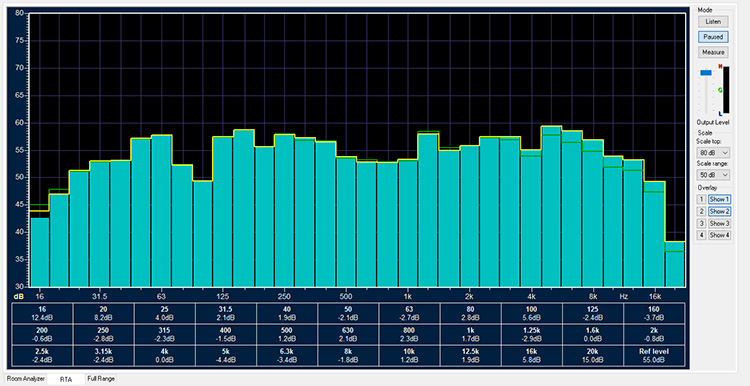
With the positioning set, I turned my attention to the two trim switches around back. I’ll let the frequency sweeps tell the story. The treble switch dropped output from 3.5kHz through 20kHz by about 3db. On the real-time analysis above, the yellow line represents the flat position on the trim switch and the green line the response with the treble trim switch in the down position.
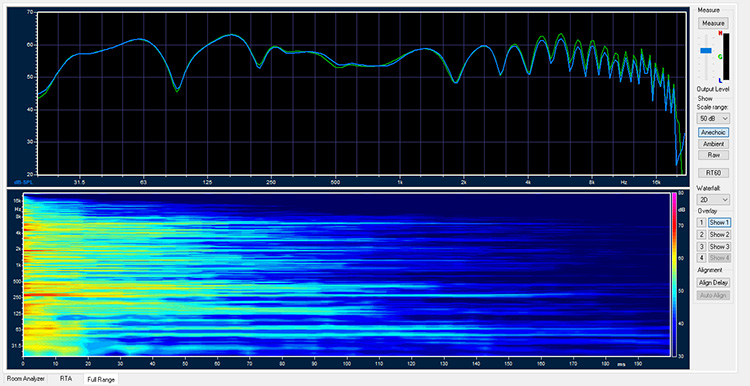
The bass trim switch did not make a big difference in my room, only decreasing bass output a dB or two at certain points of the spectrum. In either position, I was still able to get solid bass response down to around 26Hz in my room before the output started rolling off, which puts the Signature SEs firmly into the “subwoofer optional” category. I had trouble capturing the small change on the real-time measurement, so here is a full-range chart that shows the subtle difference in bass output. The green trace represents the response with the bass trim switch down (-2dB) and the treble switch in the up position. The blue line is with the bass switch in the up position and the treble trim down (-2dB). I really like seeing trim switches like these on a speaker as it lets a user tailor the sound to their room or taste. I wish more manufactures offered this option.
With the break-in, setup, and measurements out of the way, it was finally time to take a good listen to the Legacy Audio Signature SEs. Unless otherwise stated, all content was played via analog output from my OPPO BDP-83SE Nuforce Edition universal player directly into a Marantz AV8801 pre/pro set to Pure Direct mode. This shuts down all DSP, Audyssey processing, and subwoofer output. The Marantz fed my Wyred 4 Sound multichannel amp (1000 watts @ 4 ohms) via XLR cable. Speaker cabling was Kimber 4VS in a bi-wire configuration (jumpers removed from the Signature SEs) with all other source cabling (analog audio, XLR from pre-amp to amp) being Blue Jeans Cable.
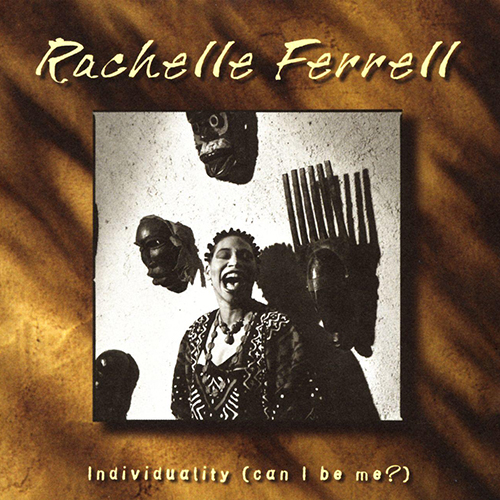
With the speakers now tuned for their best sound, I started my listening session with Rachelle Ferrell’s “Individuality” (CD: Capitol B00004W55E). Track 7, “Forgive Me”, is a great song to assess a speaker with. Exceptionally recorded, the Signature SEs captured every nuance of Rachelle’s voice, from her clear enunciation to the rich tone and body as she drops into her lower range.
Secrets Sponsor
The Signatures gave some real weight to those lower registers, without muddying up her beautiful vocal tone. The upper registers of Ms. Ferrell’s voice have a very breathy nature which was nicely reproduced as well. I did notice a touch of excess energy in the upper midrange and lower treble but switching the treble trim switch to the down (-2dB) position quickly fixed this. If you look at my in-room measurements above, you will see that this provided a flatter response in my room, so I was not at all surprised that I preferred the sound this way and left the treble trim toggle in the down (-2dB) position for the remainder of my listening. The bass line in this track was exceptionally clear, punchy, and deep but had no bloat whatsoever and sounded very realistic. Imaging was excellent, with the vocal taking a definite set between the two speakers and the instruments clearly defined in space off to the sides. Those instruments also seemed to be at different depths on the stage, furthering the illusion that I was listening to a live band.
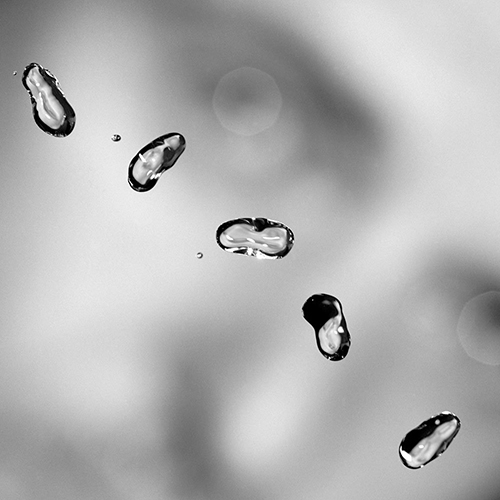
Next, I pulled out Peter Gabriel’s “Up” on SACD (SACD: Geffen 0694935362), and set my OPPO to read the 2-channel SACD layer. While this is a hard disc to find, if you are a Peter Gabriel fan I highly recommend picking this one up. The sonics are spectacular throughout, but “Growing Up” really stands out to me. This is an incredibly dynamic track and the Signature SEs captured its huge dynamic range with ease.
The bass on this track is very powerful, but the dual 10” woofers keep things crisp and tight. The SEs were clearly dipping into the low-30/upper-20Hz range on the bass hits without issue. The myriad of sound effects throughout this track were reproduced with stunning clarity and detail. This was my first experience with AMT or ribbon drivers in my home and I can see why they’ve developed such a following. They really capture fine details in music so well without crossing over into harsh territory as some other driver types do. Gabriel’s voice sounded absolutely pristine through the AMT midrange and tweeter. I wound up playing most of this disc before moving on as I simply enjoyed it so much.

I always like to hear how a speaker performs with well-recorded classical music so I loaded up the “Tutti!: Orchestral Sampler” SACD from Reference Recordings (SACD: Reference Recordings RR-906SACD). The finale of the Firebird suite (track 5) as conducted by Eiji Oue with the Minnesota Orchestra was a pure blast.
The quiet build up was so delicate and then BOOM!, in comes the huge rolling kettle drum hits and horns. Once again, the Signature SEs captured these huge dynamic changes with ease. The chimes that enter a little later had tons of air and shimmer to them but were not too bright in nature. I also ran through track 6 on this disc, Mozart’s “Piano Concerto No. 21 – Andante” and was amazed at just how great it sounded. The upper piano notes came through with a delicate elegance while lower tones had just the correct weight and body to them. The piano just sounded so “right” to my ears. The natural bass line on this track blended smoothly with the piano notes but remained clearly distinct. Winds sounded appropriately “woody” yet remained delicate and detailed. The overall midrange balance was very smooth but also very neutral. Overall, this was a remarkable presentation of a great piece of recorded music.
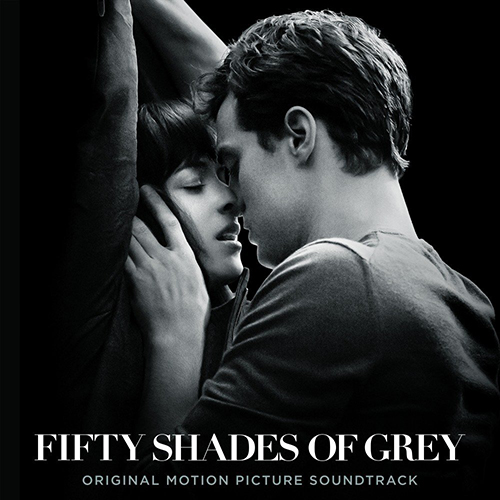
Having already discovered how good the Legacy Audio Signature SEs could sound with well-recorded “audiophile” recordings, I turned my attention to some more mainstream tracks that would test the whole “big speaker, big sound” theory. Beyonce’s “Haunted” (Michael Diamond mix) from the “50 Shades of Grey” Soundtrack (CD: Republic B00R5DXFS4) is a truly killer version of this song.
While it is mixed a touch bright (as pop songs tend to be), the Signature SEs kept everything nicely in check without masking details in Beyonce’s vocal. I could hear just a touch of gravel creeping into her voice as she dropped down into her lower register. The studio-added reverb added a cool amount of fullness to the mix and filled my room through the Signatures. Then the bass notes hit and my room exploded with energy. I had the volume pretty high, but was still amazed at the raw bass power the Signature SEs could produce. We’re talking heart-palpating, buttocks-vibrating levels here folks, subwoofers are truly optional with these babies. It wasn’t just the depth and volume of the bass that struck me, but the quality – so crisp and tight. The Signature SE Towers have some of the best overall bass response and accuracy of any speaker I have ever heard.
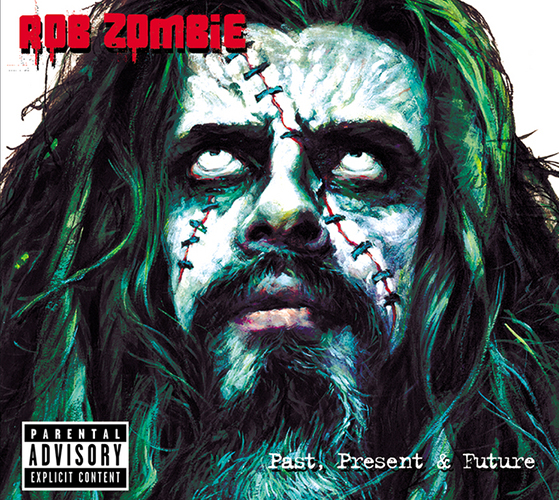
“More Human Than Human” from Rob Zombie’s “Past, Present, & Future” (CD: Geffen B0000C7PWF) was up next. I cranked this puppy up and boy did it hit hard. Bass was pounding, but the bass line remained clean and easy to track. Guitars gave that “wall of sound” but didn’t feel like an icepick was hitting my eardrums.
The AMT midrange and tweeter continued to impress me here. While there was a touch of brightness on the guitar, this disc was mixed so that the guitars would cut through. Rob Zombie’s vocals were appropriately screechy, but again that’s how the disc was mixed. Even when cranked up to over 100dB, I didn’t hear any decrease in the clarity of this track or increase in harshness. These speakers can really take a pounding.
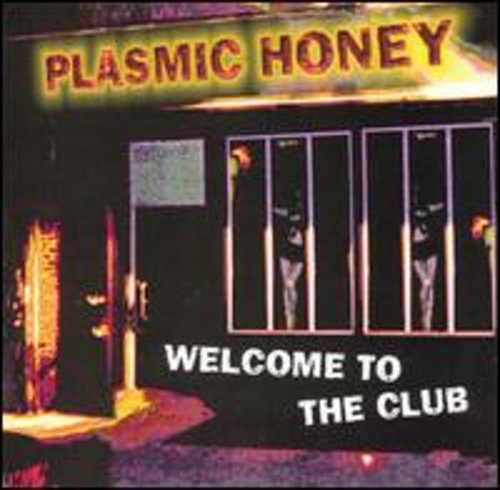
I couldn’t send the Signature SEs back without pumping a few of my favorite hard house tracks from my DJ’ing days so I popped in Plasmic Honey’s CD compilation of their greatest hits, “Welcome to the Club” (CD: Jellybean Records B00004SBSB). “We Are in the Dark (Lights Out Dub)” is probably my favorite cut of theirs and the Signature SEs did it total justice.
The filtered bass was deep, tight, and appropriately kicking. The flowing, classical-inspired synth lines that made Plasmic Honey famous were rich and musical. The Signature SEs conveyed the dark tone of this club classic and brought back fond memories of late nights/early mornings from my college years. Knowing that Legacy Audio also does professional audio, I could only imagine what kind of club system I could build with their help.
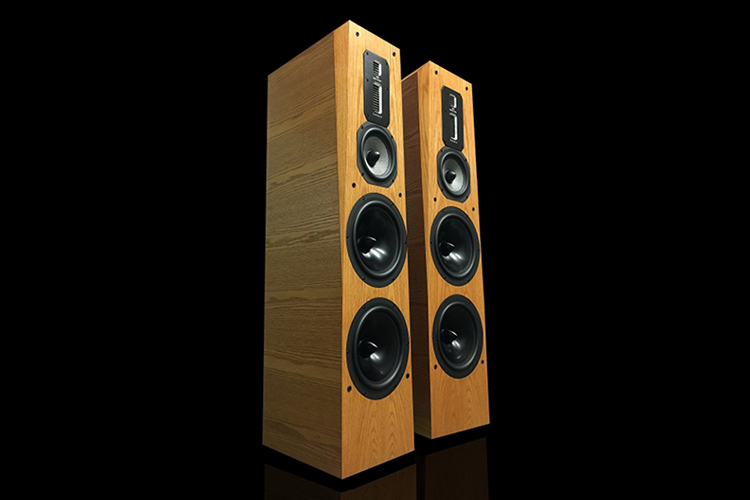
While Their List Price Of $6,996/pair Isn’t Cheap, THE LEGACY AUDIO SIGNATURE SE TOWER SPEAKERS Offer A Lot Of Bang For The Buck.
- Excellent build/finish quality
- Incredible dynamics
- Fantastic bass response
- Very smooth yet detailed treble
- Neutral midrange
- Very good imaging and sound staging
- Highly revealing of source material
- Speakers would be more stable with outrigger-type feet
- Longer carpet spikes to pierce thick carpets/pads
- Magnetic grille option
- Slight brightening of upper midrange and treble below tweeter axis
There are very few speakers out there that offer such a compelling mix of rock-solid American construction, fantastic sound quality, and sheer dynamics. You could easily spend a lot more money and get far less.
In case you didn’t notice, I really enjoyed my time with the Legacy Audio Signature SE Tower Speakers. They certainly lived up to the “big speaker, big sound” mantra but they could do so much more than that. Not only did they fill my room with big, booming sound but they also delivered more quiet passages with incredible nuance and delicacy. Their very neutral overall character was incredibly flattering to good recordings while still remaining tolerant of poor sources. The AMT midrange and treble drivers remained clear and detailed at insane volume levels and the dual 10” woofers could seriously kick. Throw in the easy-to-drive nature of these speakers along with their excellent build quality and you have one heck of a bargain in the high-end audio world. Without a doubt this is one of the best-sounding speakers I have heard for less than $10,000 per pair. The Legacy Audio Signature SE Towers would make a great choice for a two-channel stereo system or as the mains in a killer home theater setup. Long live big speakers!!!!


